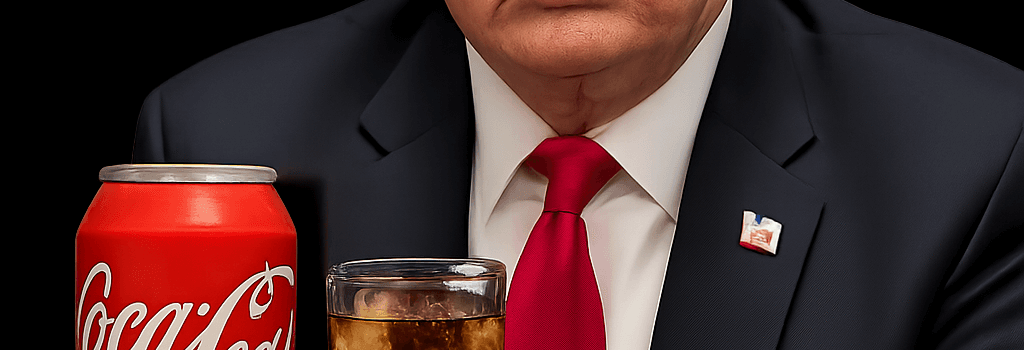Trump’s Coca-Cola Agreement: Sweetener Science Insights

Background: Presidential Announcement on Cane Sugar
On July 16, 2025, President Trump took to social media to declare that he had personally convinced The Coca-Cola Company to replace high-fructose corn syrup (HFCS) in its flagship product with “REAL Cane Sugar.” His post read, “I’d like to thank all of those in authority at Coca-Cola. This will be a very good move by them—You’ll see. It’s just better!” Within hours, the claim went viral, fueling discussion among consumers, nutritionists, and food-tech experts.
Coca-Cola’s Official Response
By mid-Wednesday, Coca-Cola issued a brief, noncommittal statement on its website:
“We appreciate President Trump’s enthusiasm for our iconic Coca-Cola brand. More details on new innovative offerings will be announced soon.”
The statement neither confirmed nor denied a nationwide switch to cane sugar, leaving the president’s claim unverified.
Industry Context
- Coca-Cola has long produced “Mexican Coke” with cane sugar for export to the U.S., meeting niche demand.
- In domestic production, HFCS-55 (55% fructose, 42% glucose) is favored for its lower cost, consistent sweetness, and liquid form.
- Switching to crystalline sucrose would require adjustments to bottling lines, storage, and logistics.
High-Fructose Corn Syrup vs. Cane Sugar: Technical Specifications
HFCS Production Process
- Starch liquefaction: Corn starch is broken down by alpha-amylase at ~95°C.
- Saccharification: Glucoamylase converts maltodextrins to glucose.
- Isomerization: Glucose isomerase converts a portion of glucose to fructose, yielding HFCS-42 or HFCS-55.
- Purification: Ion-exchange chromatography and demineralization remove proteins, salts, and color.
- Final product: A stable, liquid sweetener with a typical Brix of 75–85°.
Cane Sugar Refining
- Juice extraction: Crushing sugarcane stalks releases raw juice.
- Clarification: Liming with Ca(OH)2 and carbonation (CO2) removes impurities.
- Evaporation & crystallization: Vacuum pans concentrate syrup and form sugar crystals.
- Drying & screening: Centrifuges separate molasses; crystals are dried to ~0.05% moisture.
Metabolic Pathways and Health Implications
Both HFCS-55 and sucrose yield similar proportions of fructose and glucose. After ingestion:
- Glucose enters systemic circulation, prompting insulin release.
- Fructose is largely metabolized in the liver via fructokinase and aldolase B pathways, generating intermediates for lipogenesis.
Experts note that excessive intake of any free sugar—HFCS or sucrose—can contribute to hepatic steatosis, dyslipidemia, and insulin resistance.
Comparative Analysis of Sweetener Technologies
From a process-engineering standpoint, HFCS and sucrose differ in logistics and cost structure:
- HFCS: Centralized wet-milling plants, year-round corn supply, lower transportation cost per Brix unit.
- Sucrose: Seasonal sugarcane harvests, energy-intensive evaporation, higher packaging and shipping overhead.
Industry Implications and Market Trends
Consumer shifts toward “clean labels” have driven some beverage brands to experiment with alternative sweeteners such as:
- Stevia glycosides (rebaudioside A): zero-calorie, potent sweetness, aftertaste challenges.
- Tagatose: rare sugar with low glycemic index but high production cost.
Coca-Cola’s large-scale move to sucrose would signal a major strategic pivot in ingredient sourcing and supply-chain partnerships.
Regulatory Perspectives and Nutritional Guidelines
The American Medical Association’s 2008 report concluded that HFCS and sucrose are “virtually indistinguishable” in absorption and caloric load. The World Health Organization recommends limiting free sugars to <10% of daily energy intake, regardless of source.
Expert Reactions
“HFCS is just a sweetener made from corn. It’s safe, has about the same number of calories per serving as table sugar, and is metabolized in a similar way by your body.”
— The Coca-Cola Company
Marion Nestle, Ph.D., Professor Emerita of Nutrition and Food Studies at NYU, commented: “Whether Coke is sweetened with cane sugar or HFCS, it still delivers roughly 10 teaspoons of sugar per 12-ounce can, posing similar risks for obesity, Type 2 diabetes, and cardiovascular disease.”
Conclusion
President Trump’s announcement remains unverified by Coca-Cola. Technically, switching from HFCS to sucrose entails significant changes in manufacturing, supply-chain logistics, and cost structures. From a nutritional standpoint, experts agree that the type of sugar matters far less than the total sugar load in the diet.